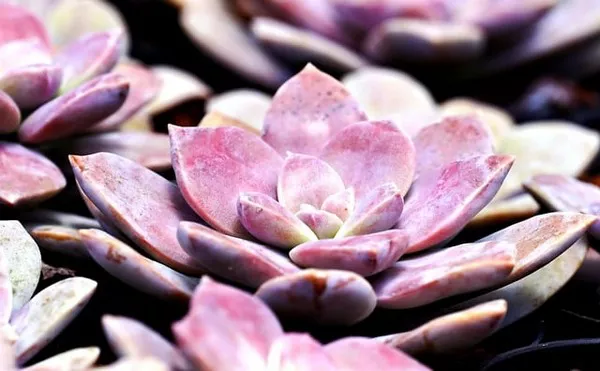In the vast world of botanical marvels, two groups of plants stand out for their unique adaptations to arid environments: cacti and succulents. While they share some similarities, they also possess distinctive features that set them apart. Understanding these differences is key to appreciating their diversity and cultivating them successfully.
Introduction to Cacti and Succulents
Cacti and succulents are both members of the plant family known as succulents. Succulents, broadly defined, are plants that have evolved to store water in their leaves, stems, or roots, enabling them to survive in dry climates with limited water availability. However, within the category of succulents, cacti constitute a specific group distinguished by several unique characteristics.
Distinguishing Features of Cacti
Cacti are perhaps the most iconic representatives of the succulent family. They are renowned for their distinctive appearance, characterized by thick, fleshy stems and spines. One of the most defining features of cacti is the presence of areoles—small, specialized structures from which spines, flowers, and new growth emerge. Areoles are unique to cacti and serve as a key diagnostic feature distinguishing them from other succulents.
Another distinguishing trait of cacti is their reduced leaves or, in many species, the complete absence of leaves. Instead of leaves, cacti have evolved modified structures called cladodes or phylloclades, which perform photosynthesis and store water. This adaptation helps cacti minimize water loss through transpiration, enabling them to thrive in arid environments.
Furthermore, cacti typically produce strikingly vibrant flowers, often in a range of colors, shapes, and sizes. These flowers are adapted for pollination by specific animals, such as birds, bats, or insects, further highlighting the ecological significance of cacti in their native habitats.
Succulents Beyond Cacti
While cacti are a notable subset of succulents, the broader category encompasses a diverse array of plant species with varying growth habits, appearances, and ecological adaptations. Succulents can be found across different plant families, including but not limited to Crassulaceae, Euphorbiaceae, and Asphodelaceae.
Unlike cacti, succulents may or may not have spines, and their growth forms can range from rosettes to trailing vines. Many succulents retain their leaves, which are often thick and fleshy, serving as water storage organs. Some succulents, like Aloe vera and Agave spp., have spiky leaves, but these are not borne from areoles as in cacti.
Additionally, succulents exhibit a remarkable diversity of reproductive strategies. While some species reproduce primarily through seeds, others can propagate through vegetative means such as offsets, leaf cuttings, or stem cuttings. This adaptability contributes to the success of succulents in various environments and makes them popular choices for cultivation and landscaping.
Cultural Significance and Uses
Both cacti and succulents hold cultural significance across different societies and have been valued for their ornamental, culinary, medicinal, and ecological importance.
In many regions, cacti hold symbolic significance and are deeply ingrained in indigenous cultures. For example, various species of prickly pear cacti (Opuntia spp.) have been used for centuries by Indigenous peoples in the Americas for food, medicine, and religious ceremonies. The saguaro cactus (Carnegiea gigantea) is an iconic symbol of the American Southwest and plays a vital role in the ecosystems of the Sonoran Desert.
Succulents, too, have a rich history of human interaction. Aloe vera, for instance, has been prized for its medicinal properties for millennia, with historical records documenting its use in ancient Egypt, Greece, and China. Today, succulents are not only appreciated for their beauty but also utilized in various industries, including horticulture, cosmetics, and alternative medicine.
Cultivation and Care
Successfully cultivating cacti and succulents requires an understanding of their specific environmental requirements and care needs.
Both groups of plants thrive in well-draining soil mixes that mimic their native habitats, preventing waterlogged conditions that can lead to root rot. Additionally, providing ample sunlight is crucial for healthy growth, as most cacti and succulents are adapted to high-light environments.
Watering practices are perhaps the most critical aspect of caring for cacti and succulents. While these plants are adapted to dry conditions, they still require periodic watering to remain healthy. However, overwatering can be detrimental, leading to root rot and other issues. A general rule of thumb is to allow the soil to dry out between waterings, adjusting the frequency based on factors such as season, temperature, and humidity.
In terms of temperature, most cacti and succulents prefer warm conditions and can tolerate a wide range of temperatures, as long as frost is avoided. However, some species have specific temperature requirements, so it’s essential to research the needs of individual plants before cultivation.
Conclusion
Cacti and succulents are fascinating groups of plants that have evolved remarkable adaptations to survive in arid environments. While cacti are a distinctive subset of succulents, characterized by their spiny stems and areoles, succulents encompass a diverse array of species with varying growth habits and appearances. Understanding the differences between cacti and succulents is essential for appreciating their diversity and successfully cultivating them in home gardens or landscapes. Whether prized for their ornamental beauty, cultural significance, or practical uses, cacti and succulents continue to captivate plant enthusiasts around the world.


